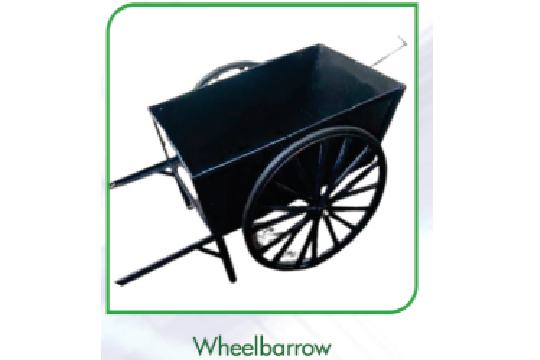
WHEEL BARROWS

A wheelbarrow is a small hand-propelled vehicle, usually with just one wheel, designed to be pushed and guided by a single person using two handles at the rear, or by a sail to push the ancient wheelbarrow by wind. The term "wheelbarrow" is made of two words: "wheel" and "barrow." "Barrow" is a derivation of the Old English "bearwe" which was a device used for carrying loads.
The wheelbarrow is designed to distribute the weight of its load between the wheel and the operator, so enabling the convenient carriage of heavier and bulkier loads than would be possible were the weight carried entirely by the operator. As such it is a second-class lever. Traditional Chinese wheelbarrows, however, had a central wheel supporting the whole load. Use of wheelbarrows is common in the construction industry and in gardening. Typical capacity is approximately 100 litres (3.53 cubic feet) of material.
 WhatsApp
WhatsApp